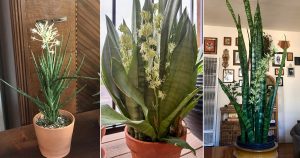No doubt all of us living in apartments, condos and on small lots have done the same arithmetic when it comes to growing edible plants. You look at your meager balcony, patio or yard, google to see how closely bell peppers or tomatoes can be planted (on that subject, check out this post at Fresh Dirt about planting in a diamond formation), and quickly realize that while it is entirely possible to enjoy several meals worth of fresh produce, you won’t be saying sayonara to the grocery store anytime soon. This calculation may have discouraged you from trying to grow months’ worth of meals, but it shouldn’t have. Instead of giving up, why not expand your available gardening space by participating in a community garden?
Let me start off by saying that I have absolutely zero community gardening experience. I don’t have anything against them–in fact I think they are a pretty great idea–I just have never gotten around to researching which gardens are in my area and whether or not they have any plots available. Obviously then, this post is not based on my own experience, and it’s not even based on carefully researched information I found on the internet or in books. Rather, I went and found my own “primary sources.” That is, I interviewed people who have gotten off their tushes and found community gardens to dig around in. Imagine that!
What is a Community Garden?
The American Community Gardening Association defines community gardens as, “Any piece of land gardened by a group of people.” Usually this means an otherwise unused bit of land that has been divided up into separate, smaller plots and made available to members of the surrounding community as a space for gardening. Often people grow edibles, like eggplants, onions, and basil, but there’s nothing stopping you from covering your whole plot with sunflowers if that’s your thing.
The size of the plots varied greatly among the people I spoke to. For example, Ben Ludwig gardens in a 20 ft x 60 ft plot at the community garden located at 52nd St. and Prescott St. in Portland Oregon. On the other end of the spectrum, Jackie Connelly’s plot behind the Artech building in Vancouver is 5 ft x 9 ft, but she also has a 4 ft x 4 ft potato box.
What is Included in a Community Garden, Other than the Plot?
The included “perks” also varied greatly from garden to garden. Most included water in the “rent,” while others included compost heaps and free mulch. Elizabeth Anderson (who gardens at Spring Gardens in Philadelphia) and Elaine Petrowsky’s community gardens both have a shed with large tools that anyone can use. And Jackie’s community garden is thinking about using some extra money they have to line the walkways with sand or bricks. One thing that seemed to be universal (and makes sense) was that improvements to your own plot (like a trellis or fencing) come out of your own pocket.
Another perk are the friendships made with the owners of neighboring plots. Georgy Edgson reports that her fellow community gardeners all “muck in with various tasks and there is a real sense that we’re a team – in a short time we’ve become good friends.” Elizabeth regularly meets for “gardening dates” with a friend who gardens in the plot next to hers, and has found that even the people she doesn’t know very well are available for moral support:
I had determined that [my zucchini] was showing signs of having a squash vine borer and I needed to get it out. [A neighbor who I barely knew] provided moral support that I needed to do this fairly disgusting task . . . she kept telling me ‘you can do it!’ and cheering me on.”
How Much Does a Community Garden Plot Cost?
No doubt you are thinking this all sounds great, but very little in life is free. How much does a garden plot cost? Well, actually, one of the gardeners I spoke with does have access to her plot for free. Georgy Edgson says that her plot in Brighton, England doesn’t cost her anything in rent. All the gardeners share what they grow with each other pooling resources like seeds, plants and tools. She mentioned that they “also use Freecycle a lot” to find the things their community garden needs.
Jackie also doesn’t pay any yearly rent. However, all the people in her community garden split the cost of “a full dump truck load of high quality organic soil (organic compost/sand/peat mix),” wood for plot edging, and the cost of tool rentals to prepare the ground of their garden.
However, Georgy and Jackie’s experience wasn’t the norm. Most of the community gardeners I spoke with paid some sort of yearly rent for their plot, some as high as $75 (Ben), or as low as $40 (Elizabeth).
Tips for Making Your Foray Into Community Gardening a Success
- Ben – “Make friends and prepare. That way when stuff goes wrong you have friends and a plan.”
- Georgy – “There are as many gardening “rules” as there are gardeners and if you listen to all the advice, you’ll go insane. Trust your instincts and make a start.”
- Jackie – “Ask your new community gardening neighbours what has been working for them (you’re bound to get some helpful tips & tricks from others, and gardeners love to talk about their gardens!) and this is a good way to start getting to know the people you’re gardening with; I would also strongly suggest planning out what you want to grow.”
- Elizabeth – “Be friendly with your neighbors. Get a good gardening book so you can start learning what grows well together, how long things take, how to space things out, etc. Plant what you like to eat but also experiment a bit with new things you’ve never tried. Take photos of your progress. Invest in good gloves b/c you sometimes have to touch a slug.”
- Elaine – “(1) Grow organically. Since you are putting in the work, the food might as well be the healthiest it can be, (2) MULCH as soon as you get all the plants in. We put several layers of newspaper down before we mulched and it’s worked really well to keep the weeds at bay . . . (3) don’t forget a fall planting. I just placed an order for $30 more worth of seeds for cool weather crops— lettuces, spinach, green beans, arugula, beets.”
A Word of Warning: Community Gardening Isn’t For Everyone
All of the people I spoke with mentioned that folks who don’t play well with others are probably not cut out for community gardening. Likewise, those people who don’t like dirt under their nails, or who don’t like to sweat probably shouldn’t garden at all, in a community garden or elsewhere. Elizabeth also pointed out that gardening is time consuming, “you can’t just plant things in May and then check back every month or so to see what there is to pick!”
Have you ever participated in a community garden? Share your experiences in the comments!







